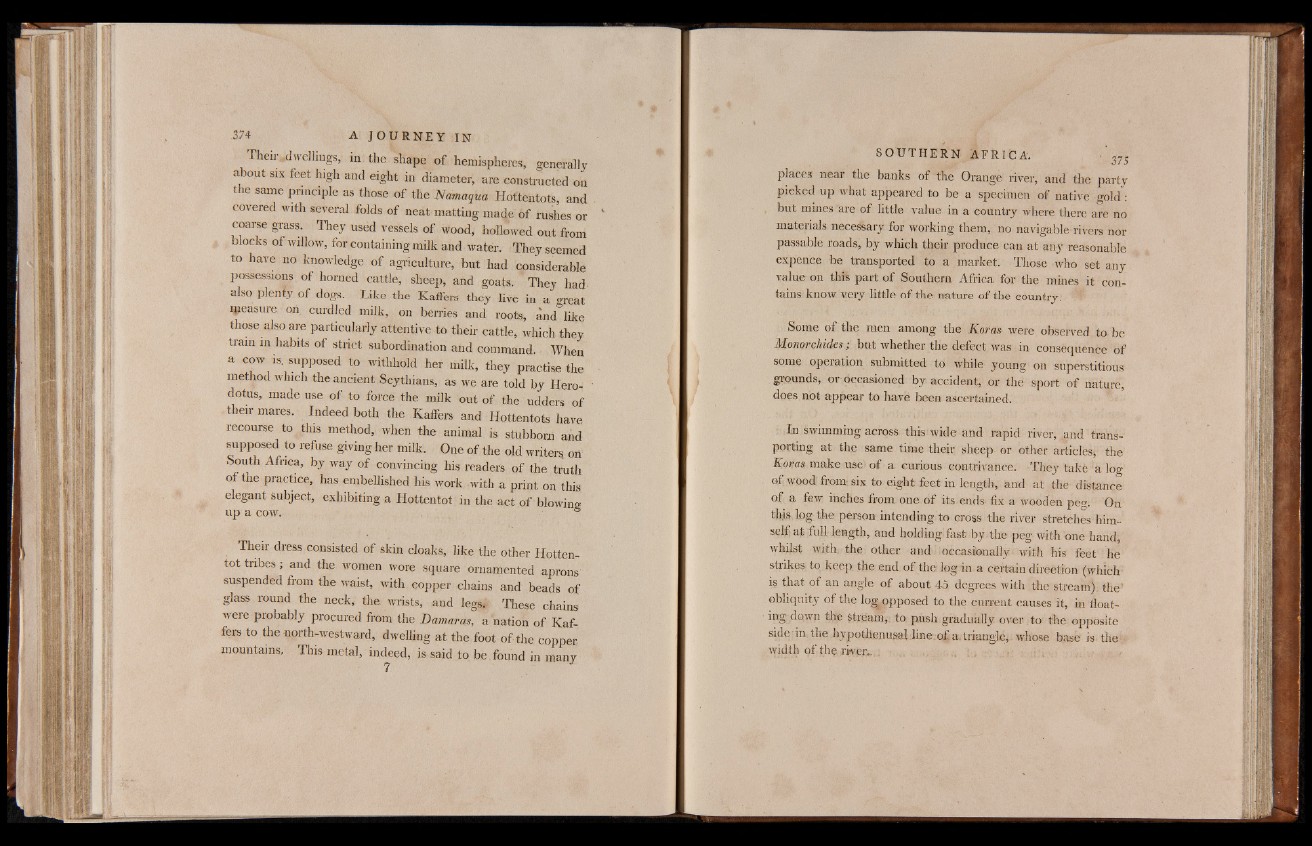
Their,dwellings, in the shape of hemispheres, generally
about six feet high and eight in diameter, are constructed on
the same principle as those of the Namaqua Hottentots, and
covered with several folds of neat matting made of rushes or
coarse grass. They used vessels of wood, hollowed out from
blocks of willow, for containing milk and water. They seemed
to have no knowledge of agriculture, but had considerable
possessions of horned cattle, sheep, and goats. They had
also plenty of dogs. Like the Kaffers they live in a great
pleasure on curdled milk, on berries and roots, and^like
those also are particularly attentive to their cattle, which they
train in habits of strict subordination and command. When
a cow is supposed to withhold her milk, they practise the
method which the ancient Scythians, as we are told by Herodotus,
made use of to force the milk out of the udders of
their mares. Indeed both the Kaffers and Hottentots have
recourse to this method, when the animal is stubborn and
supposed to refuse giving her milk. One of the old writer* on
South Africa, by way of convincing his readers of the truth
of the practice, has embellished his work with a print on this
elegant subject, exhibiting a Hottentot in the act of blowing
up a cow. I *
Their dress consisted of skin cloaks, like the other Hottentot
tribes; and the women wore square ornamented aprons
suspended from the waist, with copper chains and beads of
glass round the neck, the wrists, and legs#. These chains
were probably procured from the Damaras, a nation of Kaffers
to the north-westward, dwelling at the foot of the copper
mountains. This metal, indeed, is said to b e , found in many
places near the banks of the Orange river, and the partv
picked up what appeared to be a specimen of native gold:
but mines are of little value in a country where there are no
materials necessary for working them, no navigable rivers nor
passable roads, by which their produce can at any reasonable
expence be transported to a market. Those who set any
value on this part of Southern Africa for the mines it contains
know very little of the nature of the country.
Some of the men among the Koras were observed to be
Monorchides; but whether the defect was in consequence of
some operation submitted to while young on superstitious
grounds, or occasioned by accident, or the sport of nature,
does not appear to have been ascertained.
In swimming across this’wide and rapid river, and transporting
at the same time their sheep or other articles; the
Koras make use of a curious contrivance. They take a log
of wood; from: six to eight feet in length, and at the distance
of a few inches from one. of its ends fix a wooden peg. On
this log the person intending to cross the river stretches himself
af full length, and holding; fast by.the peg with one hand,
whilst with, the other and occasionally with his feet he
stakes to keep the end. of the log in a certain direction (which
i* that of an angle of about 4a degrees with the stream) the’
obliquity of the lo^opposed to the current causes it, in floating
down the Stream, to push gradually over 'to the opposite
side in the hypothenu&al line of a. triangle, whose base is the;
width of the river,, , , : , ,